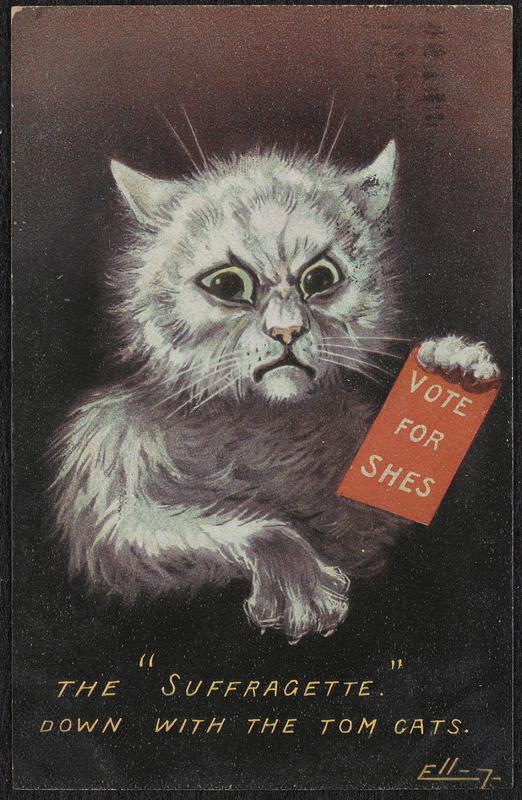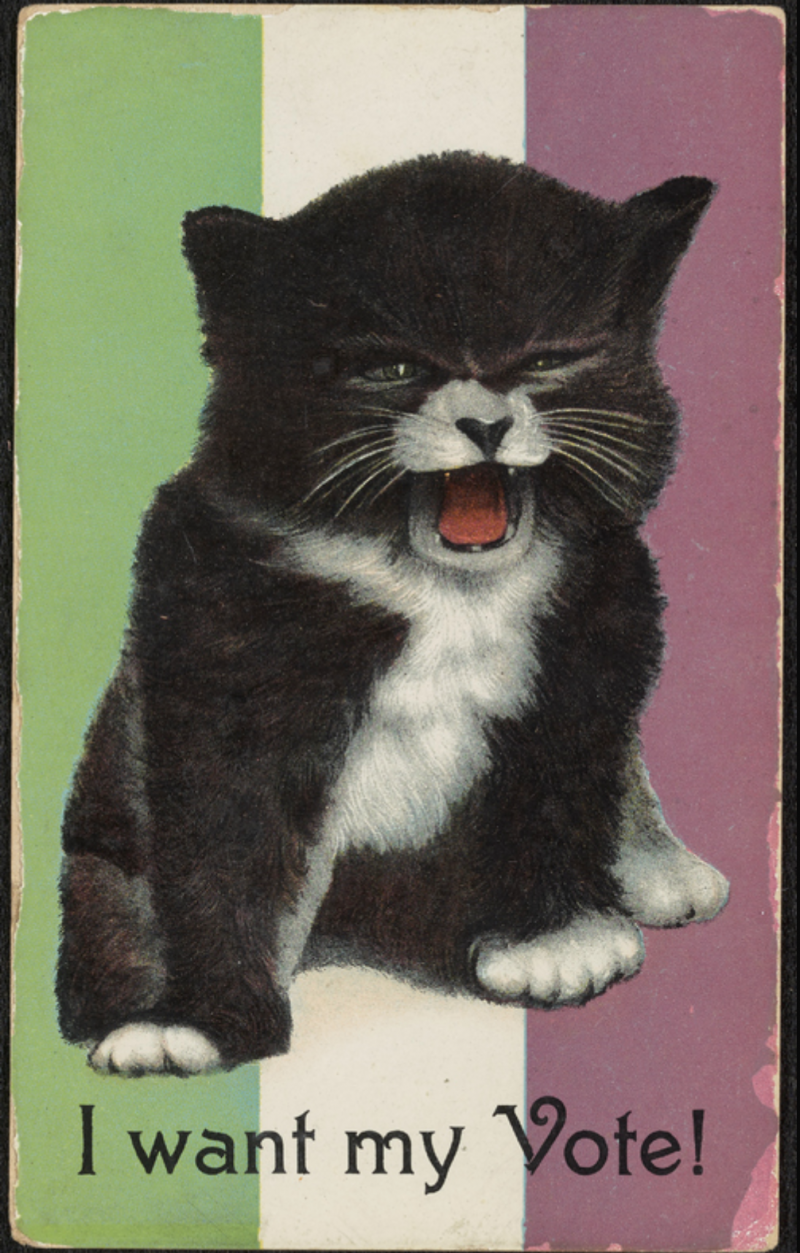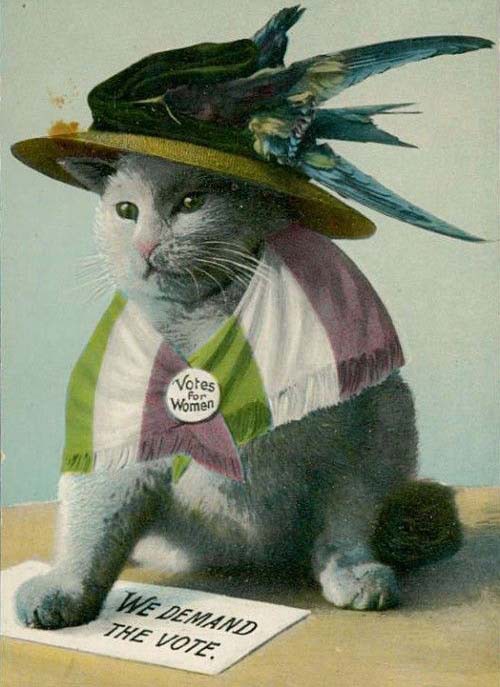Everything was going pretty swimmingly for cat ladies then, until the Roman Catholic Church showed up in the Middle Ages. In an effort to rid the world of non-Christian gods, deities other than the Holy Trinity were stigmatized and rebranded as evil. Worse, cats garnered a reputation for being minions of Satan.
In 1232, Pope Gregory—a man fond of torturing people for information—wrote a letter to Germany’s King Henry VII in which he described a Satanic ritual that involved worshippers kissing the rear end of a magical cat:
[A statue of] a black cat about the size of an average dog, descends backwards, with its tail erect. First the novice, then the master, then each one of the order who are worthy and perfect, kiss the cat on its hindquarters… They incline their heads towards the cat. ‘Forgive us,’ says the master, and the one next to him repeats this.
Then in 1486, the now-infamous Malleus Maleficarum (aka “the Witch Hammer”) book arrived. The German who wrote it, Heinrich Kramer, was inspired to do so after being ordered to leave his diocese by the church. His views on witches, and how to eradicate them, were so extreme, even other Catholics of the time couldn’t support them. That didn’t stop his book from being embraced by zealots everywhere.
By the time England executed its first witch in 1566 (a 63-year-old lady by the name of Agnes Waterhouse), the fact that she reportedly had a murderous, blood-drinking cat named Satan seemed totally plausible for many who heard about her case. A century later, demonic, power-hungry cats remained a major theme of the Salem witch trials.
In the early 18th century, as the witch trials were widely recognized as a grave miscarriage of justice, single women with cats were suddenly transformed in the public eye from frightening fiends to figures to be pitied. Unfortunately, because single women of the time were so often viewed as a nuisance—without access to jobs, unmarried women had to rely on the kindness of relatives for financial support—the cat lady became a figure of ridicule. And as resentments towards these women grew, so did the popularity of the stereotype.
This 1789 painting, Old Maids at a Cat’s Funeral, stands as a perfect example of the rhetoric of the time. If you don’t have a husband or children, it tells us, you will lose all sense of propriety.
The stereotype, of course, stuck around. And by the Victorian era, the close relationship between single women and cats was accepted as an inevitable social norm. In 1880, the Dundee Courier reported:
There is nothing at all surprising in the old maid choosing a cat as a household pet or companion. Solitude is not congenial to human nature, and a poor forlorn female, shut up in a cheerless ‘garret,’ brooding all alone over her blighted hopes, would naturally centre her affections on some of the lower animals.
Viewing “old maids” as harmless didn’t last long, however. In the early 20th century, as women inched ever closer to gaining the right to vote, cats became a standard feature of anti-suffrage propaganda. This served two purposes. First, depicting suffragettes as cats acted as a means to reduce women to the status of inconsequential, trifling animals. Second, associating women’s rights activists with this particular pet acted as a wink and a nod to the public about what kind of woman wanted the vote: lonely, bitter man-haters.



It was in the mid-20th century that concerted efforts to subvert and reclaim the cat lady began in earnest. In the 1960s, Carolee Schneemann flipped the stereotype on its head with performance art that juxtaposed footage of her cat with her own raw sexuality. This culminated in 1967’s Fuses—an 18-minute film in which Schneemann has sex with her boyfriend while her cat watches on.
Today, art and merchandise designed to joyfully rebrand the cat lady is a mere Google search away. Etsy is awash with the stuff, and companies like Mad Old Cat Lady proudly embrace and subvert imagery associated with “cat lovers, weirdos and witches.” What’s more, since 2015, CatCon has encouraged 78,000 conference attendees to embrace their inner cat lady.
Credit: Source link



